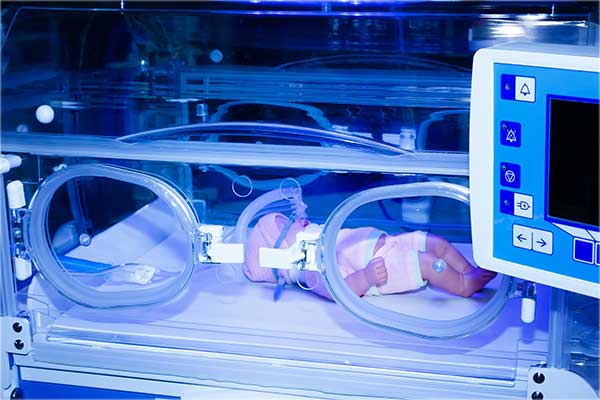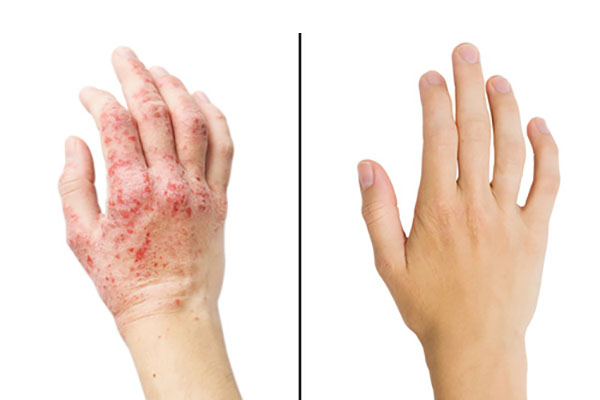Photomedicine Measurements
Photomedicine uses special optical radiation sources for therapeutic, diagnostic, endoscopic, illumination and dental curing purposes. Gigahertz Optik GmbH produces a wide range of measuring instruments like photomedicine meters that measure the intensity and efficacy of these sources. There follows some example applications using Gigahertz Optik GmbH products.
Further relevant applications can be found here:
Measurement of Effective Irradiance in Bilirubin Phototherapy
Blue light phototherapy is widely used for the treatment for neonatal hyperbilirubinaemia, a condition in which there is too much bilirubin in the blood. This causes a yellowing of the infant’s skin, known as jaundice. Effective phototherapy requires sufficiently high irradiance with appropriate wavelengths, generally accepted as ‘blue light’ over a large effective treatment area.
Neonatal phototherapy has been widely used for more than 50 years employing many lighting technologies including various fluorescent tube types, tungsten halogen and metal halide lamps as well as LED based units which are becoming increasingly commonplace. This diverse range of treatment lamps produces widely differing spectral outputs. Unfortunately, there is no universally accepted ‘action spectra’ or agreement on the most effective wavelengths which has resulted in rather poor quality dosimetry and radiometry in this field over the years.
UV Phototherapy Dosimetry
Phototherapy refers to the use of optical radiation (ultraviolet, visible and infrared light) to treat medical conditions. In particular, UV radiation is widely used to treat a range of skin conditions such as psoriasis, parapsoriasis, vitiligo, atopic dermatitis (eczema), and mycosis fungoide.
There are three principal forms of UV phototherapy:
- Broadband UVB (BB-UVB) in which the skin condition is treated with the full spectrum of UVB radiation, 280-315nm. BB-UVB lamps are typified by the Philips TL12 range;
- Narrowband UVB (NB-UVB) in which just a narrow wavelength range within the UVB spectrum is used for treatment. Typically, lamps emitting 311nm such as Philips TL01 lamps are employed. Excimer lamps and pulsed lasers (308nm) are also used.
- PUVA (Psoralen + UVA) in which broadband UVA radiation (315-400nm) is used in conjunction with a psoralen, (a compound that increases the effect of UVA radiation on the skin). PUVA is also sometimes referred to as photochemotherapy.
Pulsed Excimer-Laser Phototherapy Dosimetry
Phototherapy with narrowband UVB (NB-UVB) radiation is the preferred treatment method for many skin conditions, such as psoriasis, vitiligo, and atopic dermatitis. Low-pressure fluorescent lamps with emission at 311nm are commonly used. However, excimer lamps and lasers offer a high intensity alternative with emission at 308nm. In particular, pulsed excimer lasers enable targeted therapy with higher doses of UVB light resulting in fewer treatment sessions. The ability to target specific areas enables high doses of therapeutically effective monochromatic UVB light while leaving healthy skin unexposed and protected, thereby lowering the risk of premature skin aging and carcinogenesis.
Integrating Sphere for Total Flux of Radial Emitting Fibres used for Photodynamic Therapy
Photodynamic therapy (PDT) can be used to treat certain types of cancer as well as some skin and eye conditions. In PDT abnormal cells are destroyed by the use of light-sensitive medication, known as photosensitizers, in conjunction with a suitable light source. Typically, the activation spectrum of the photosensitizer falls within the 630nm to 850nm wavelength range. Individually, the photosensitizer medication and light source are harmless, but when the medication is exposed to the light in the presence of tissue oxygen, it activates and causes a reaction that damages the nearby cells.



